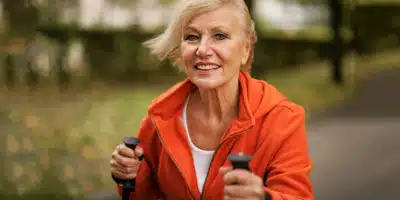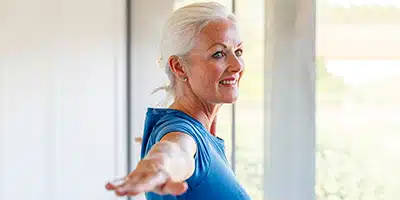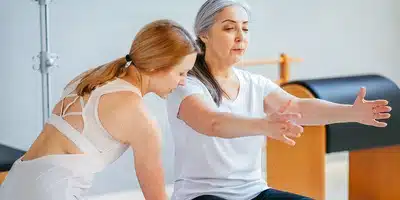Chair & Seated Exercises For Seniors
We outline some of the best chair exercises for seniors with pictures below.
Staying active and healthy is critical for seniors. Regular exercise can help delay or even prevent some diseases and disabilities older adults are more susceptible to. The more you keep your body moving, the better it will respond to the aging process.
This doesn’t mean you have to go get a gym membership or a bunch of fancy equipment, nor does it mean you have to work out every day. Most professionals recommend a couple of days a week, mixing aerobic and muscle-strengthening movements to help keep your whole body working well.
Of course, any older adult should consult their physician before starting a new exercise program. Many will recommend starting slowly, and one of the safest ways to get started is by doing specific seated exercises for seniors. These help you ease into the process without causing too much strain on your body.
How Exercises Help Seniors Avoid Falls
Fall risks are a big problem for any senior. Our bodies get weaker with age, as does our balance, our coordination, and our ability to bounce back from injuries.
A simple trip on a curb can cause real damage to older adults. Finding ways to reduce the risk can help you enjoy your life without fear of falling.
Exercise has proven to help seniors reduce fall risks by up to 34% depending on the program. The most effective regimens include a mixture of balance and functional muscle strength – both of which are targeted in the chair exercises for seniors we cover below.
The Top 6 Main Benefits of Chair Exercises
In addition to reducing fall risks, these chair exercises for seniors provide a host of other benefits. They will help older adults
- Build and maintain muscle strength
- Strengthen bones
- Slow down osteoporosis
- Keep joints, tendons, and ligaments more flexible
- Improve coordination and flexibility
- Increase energy
- Strengthen heart and lungs
- Promote a greater sense of well-being
14 Recommended seated exercises for older adults:
For each of the following exercises, remember to have a sturdy, reliable chair with you. It doesn’t need to be too fancy. Any simple folding chair will do. Just make sure you can sit up straight, touch your feet to the floor, and move it around easily if necessary.
Also, remember that the reps are a starting point. Don’t overdo it. Feel free to start smaller and build up to the recommended reps if you need to. Always listen to your body while working out.
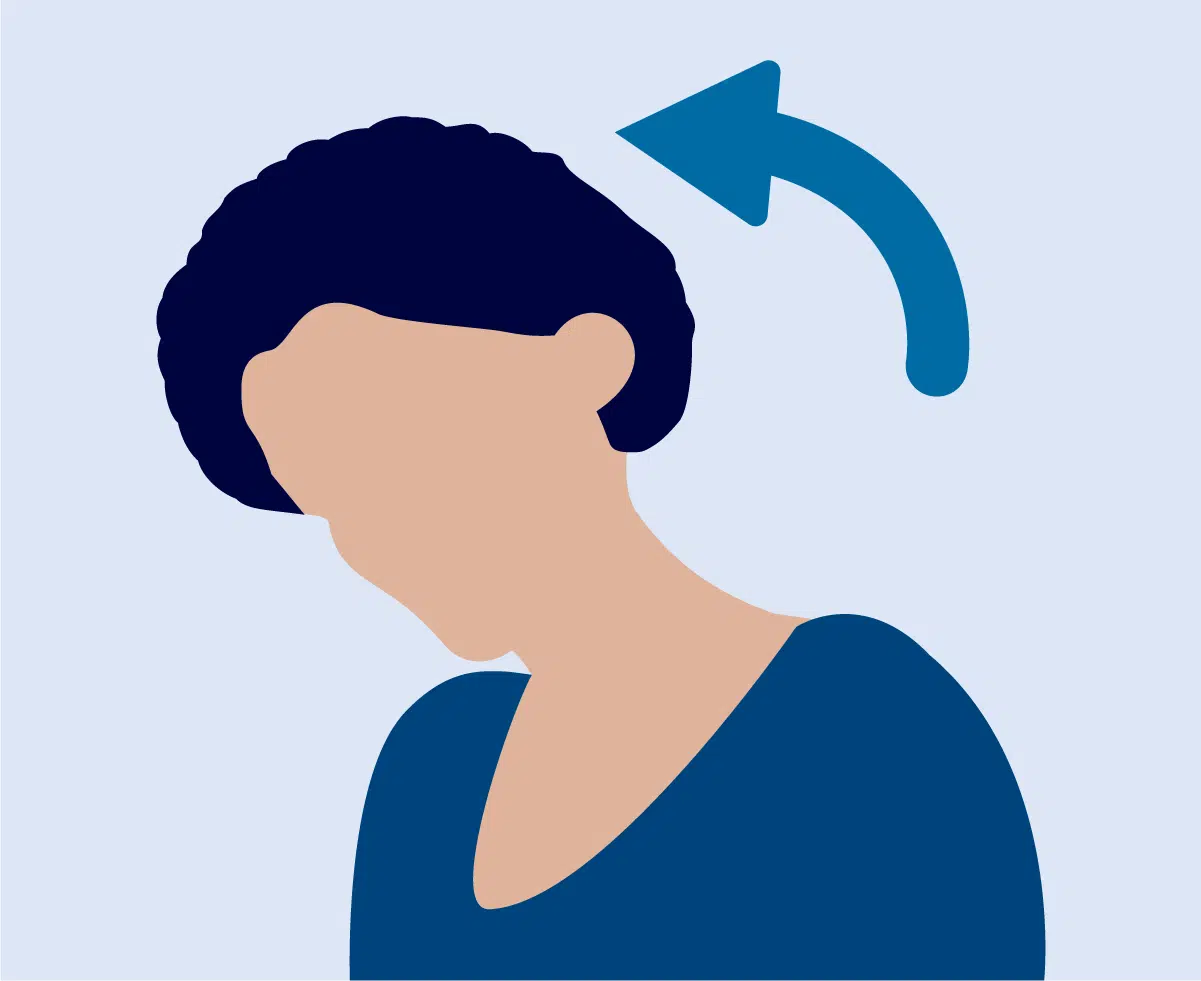
1. Neck Stretches
Neck stretches help strengthen the muscles on your neck and around your shoulders. To do this exercise…
- Sit up straight on your chair with your arms to your side and feet flat on the floor
- Tilt your head to the right as if you were trying to touch your ear to your shoulder
- Keep the rest of your body straight
- Hold in this position for 10 seconds
- Return to the starting position
- Repeat steps with a lean to the left
- Do 10 reps on each side
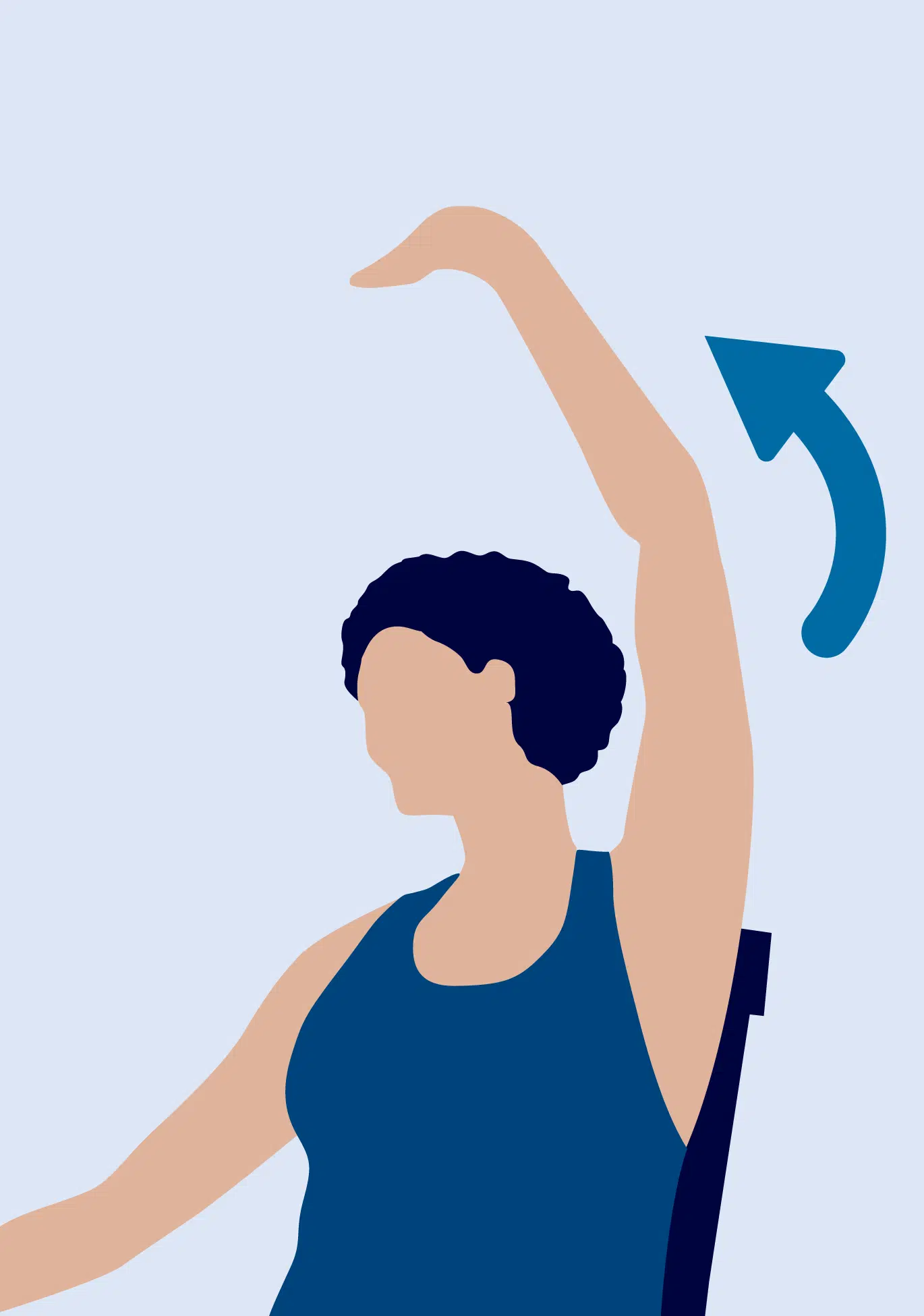
2. Arm Raises
The arm raises will stretch the muscles along your arms and the sides of your body. To do this exercise…
- Sit up straight in your chair with your arms to your side and your feet flat on the floor
- Raise your right arm up over your head while keeping your body straight
- Hold in that position for 2 seconds
- Return to the starting position
- Alternate arms and repeat steps
- Do 10 reps for each arm and then do another 10 with both arms raised
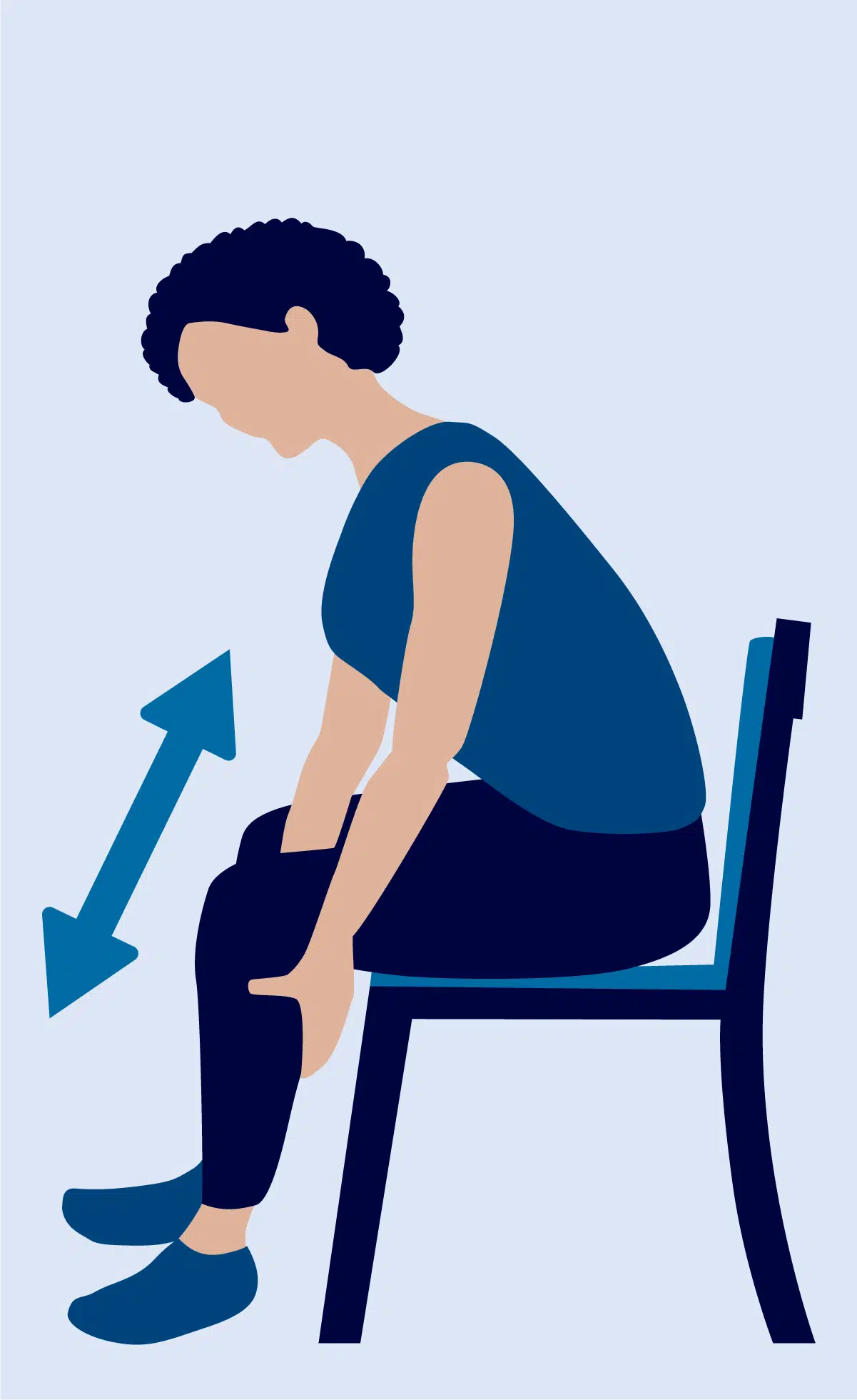
3. Back stretching and strengthening
This move will help strengthen and stretch out your back muscles, which can be critical for improving balance and overall coordination.
- Sit with your legs shoulder-length apart
- Place both hands under your right knee
- Slide your hands slowly from your knee to ankle and hold for 2 seconds
- Return to the upright position and switch sides
- Repeat the steps for your left knee to your left ankle
- Do 10 reps on each side
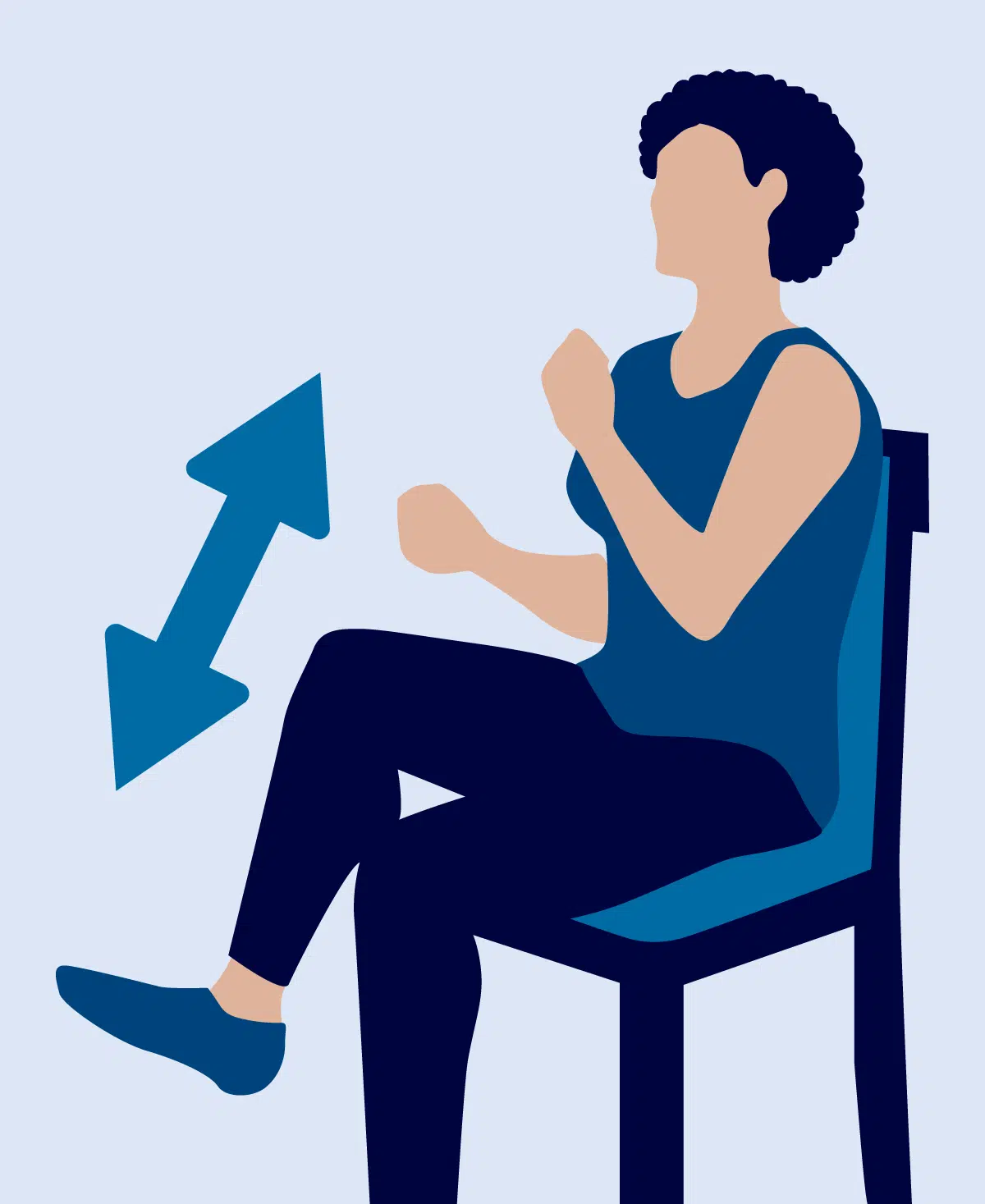
4. Seated marching
Seated marching will target your hip flexors. It’s a great, functional exercise that will work the muscles you use to climb stairs, get up from chairs, and do other daily activities. Here’s how it’s done:
- Sit back in your chair with your knees bent and feet on the floor
- Alternate lifting your knees to your chest as if you were marching
- Move your arms in unison with your legs as well
- Keep your back straight as you do this
- Do 10-15 reps for each leg
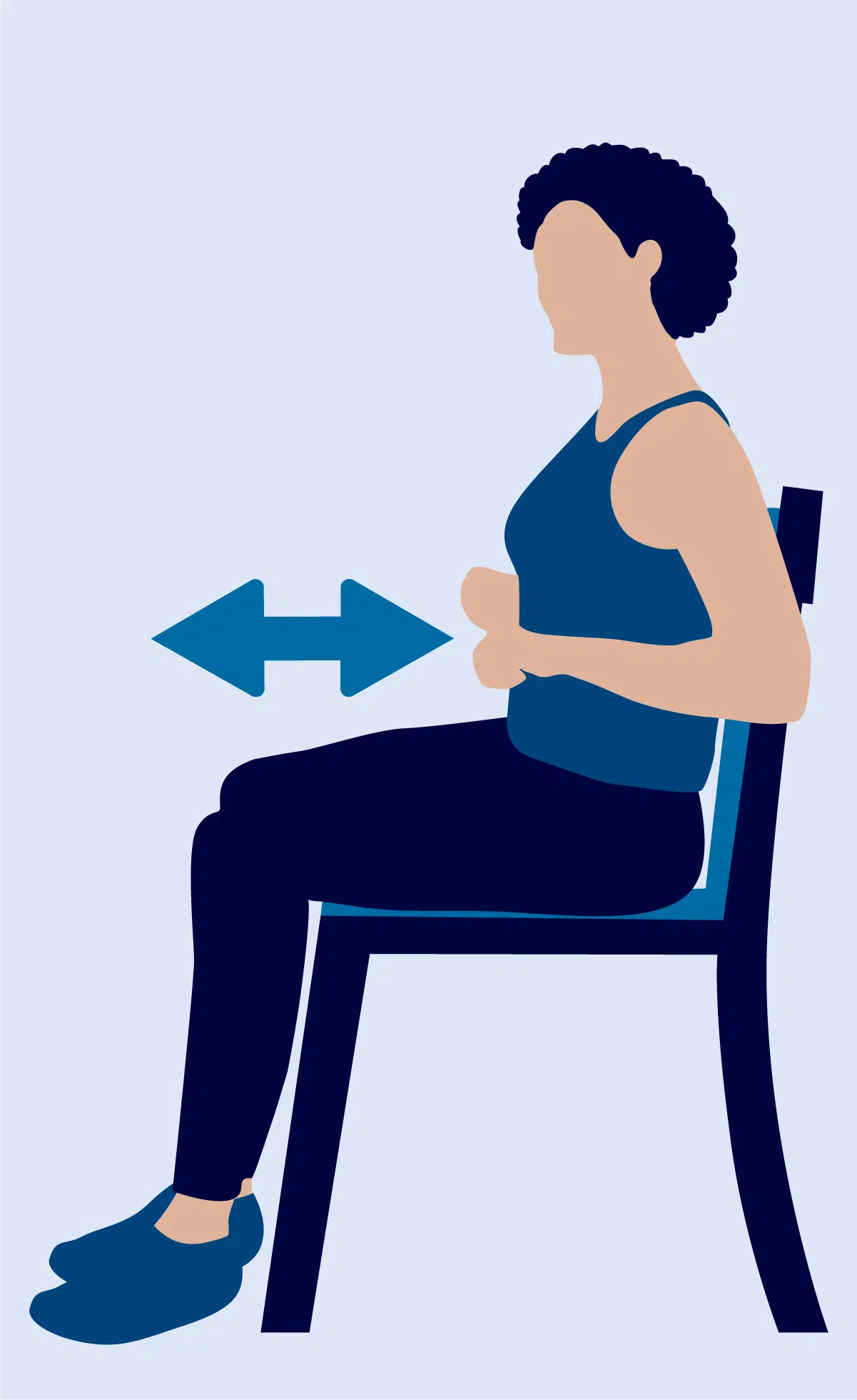
5. Rowing
Seated rowing movements help activate multiple muscle groups in your upper body, building strength in those areas. Follow these few steps to get the most out of this exercise:
- Sit as straight as possible
- Place your arm straight out in front of your chest
- Pull your arm back in so your elbow is next to your side
- Repeat steps with the opposite arm
- Do 10 reps for each arm, and then do 10 with both arms simultaneously
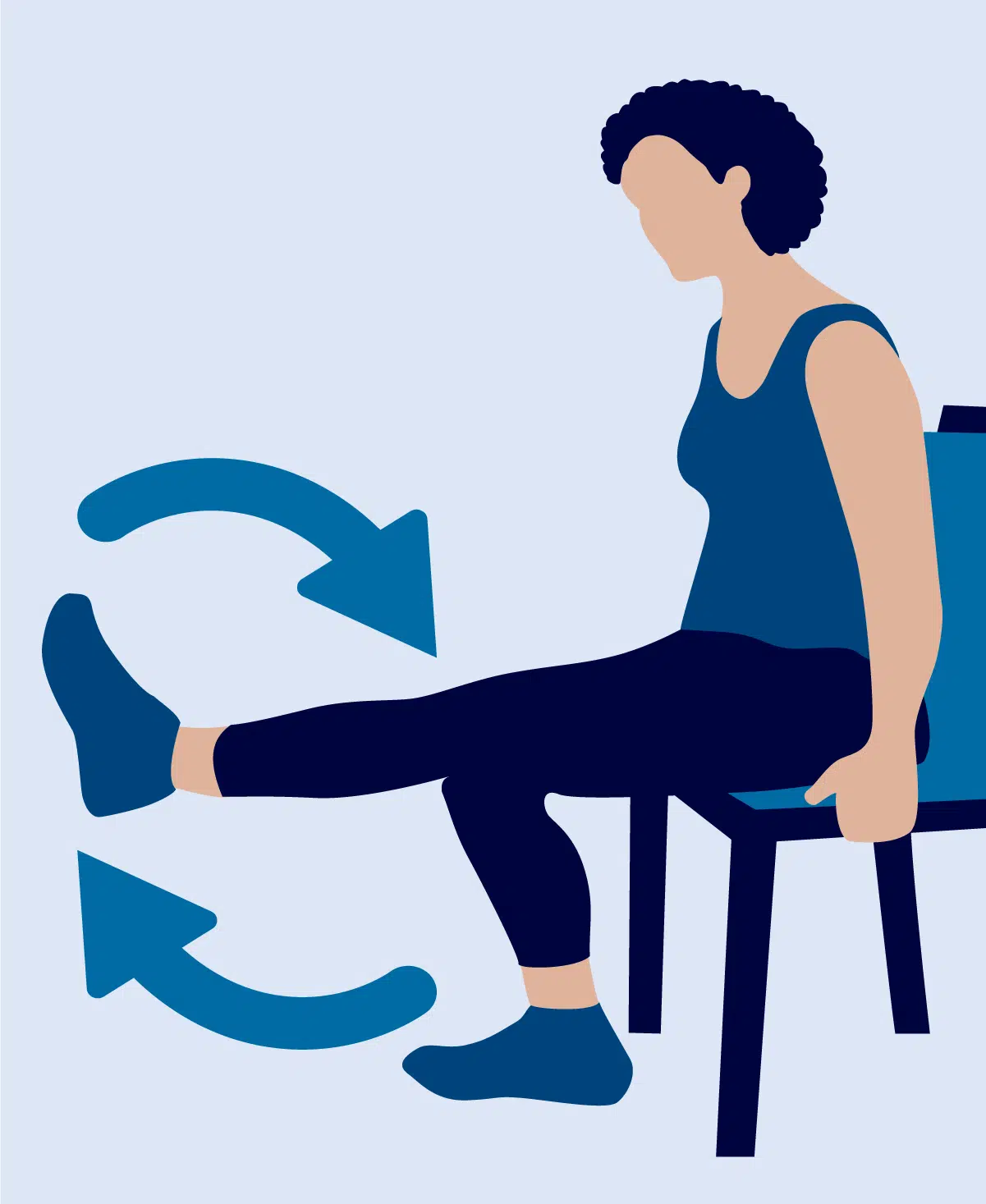
6. Ankle range of motion
This exercise will help keep your feet and ankles flexible as it stretches your muscles.
- Sit near the edge of the seat with your hands gripping the side of the chair for extra balance
- Extend your right leg out as far as you can while keeping your left foot on the ground
- Point your toe up and then rotate your foot once clockwise
- Rotate the same foot counterclockwise
- Alternate which foot you use
- Do 20 reps for each foot in each direction
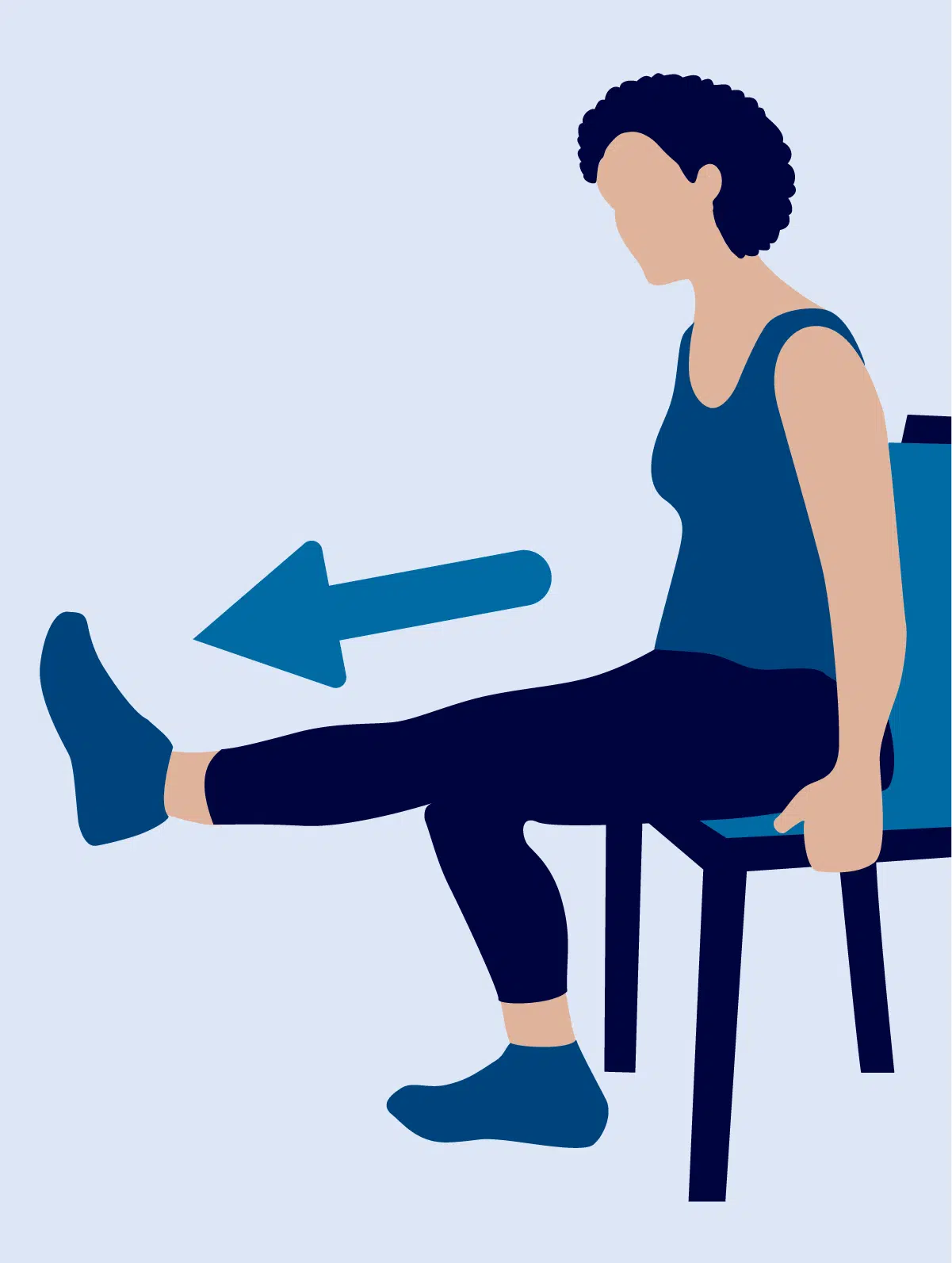
7. Knee extension
Knee extensions help stretch out your leg muscles. You should feel a nice, subtle burn all the way from your foot to your hip.
- Sit on the edge of your chair with your hands gripping the side for extra support. Keep both feet flat on the floor with your knees bent
- Straighten your right knee so your leg makes a straight line (or as straight as you can make it)
- Hold for 2 seconds
- Lower your foot back to the floor
- Repeat steps for the opposite leg
- Do 10 reps for each leg
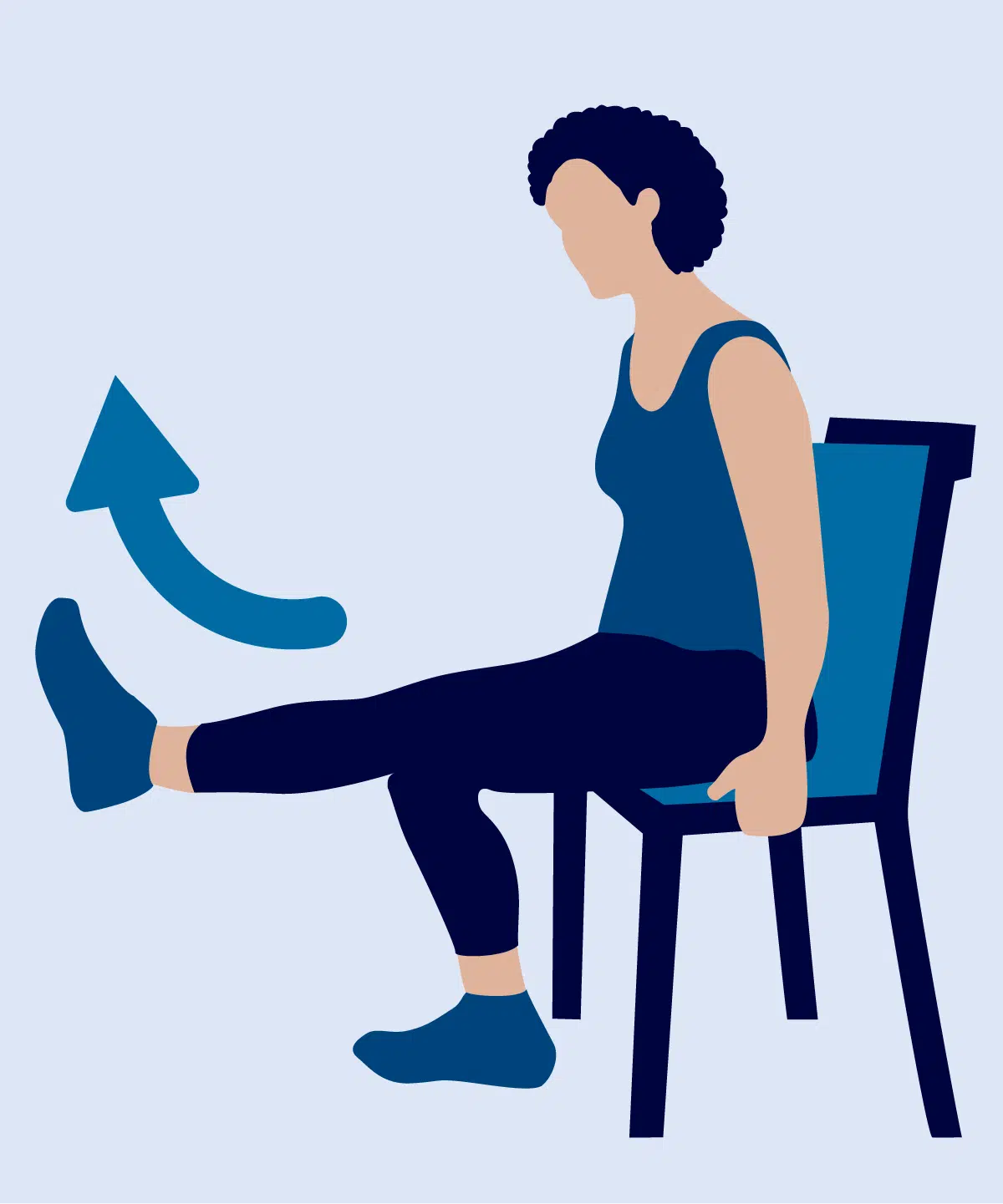
8. Small kicks
Small kicks are sort of like a fast-forwarded version of the knee extensions. Instead of pausing in the middle, you’ll do more of a kicking motion to get those muscles moving a bit! Here’s how you do it.
- Sit on the edge of your chair with your hands gripping the side for extra support. Keep both feet flat on the floor with your knees bent
- Straight out your right knee quickly, raising your foot as if you were kicking a ball
- Bring the foot back down to the ground after you kick
- Alternate to your left leg
- Do 10-15 reps for each leg
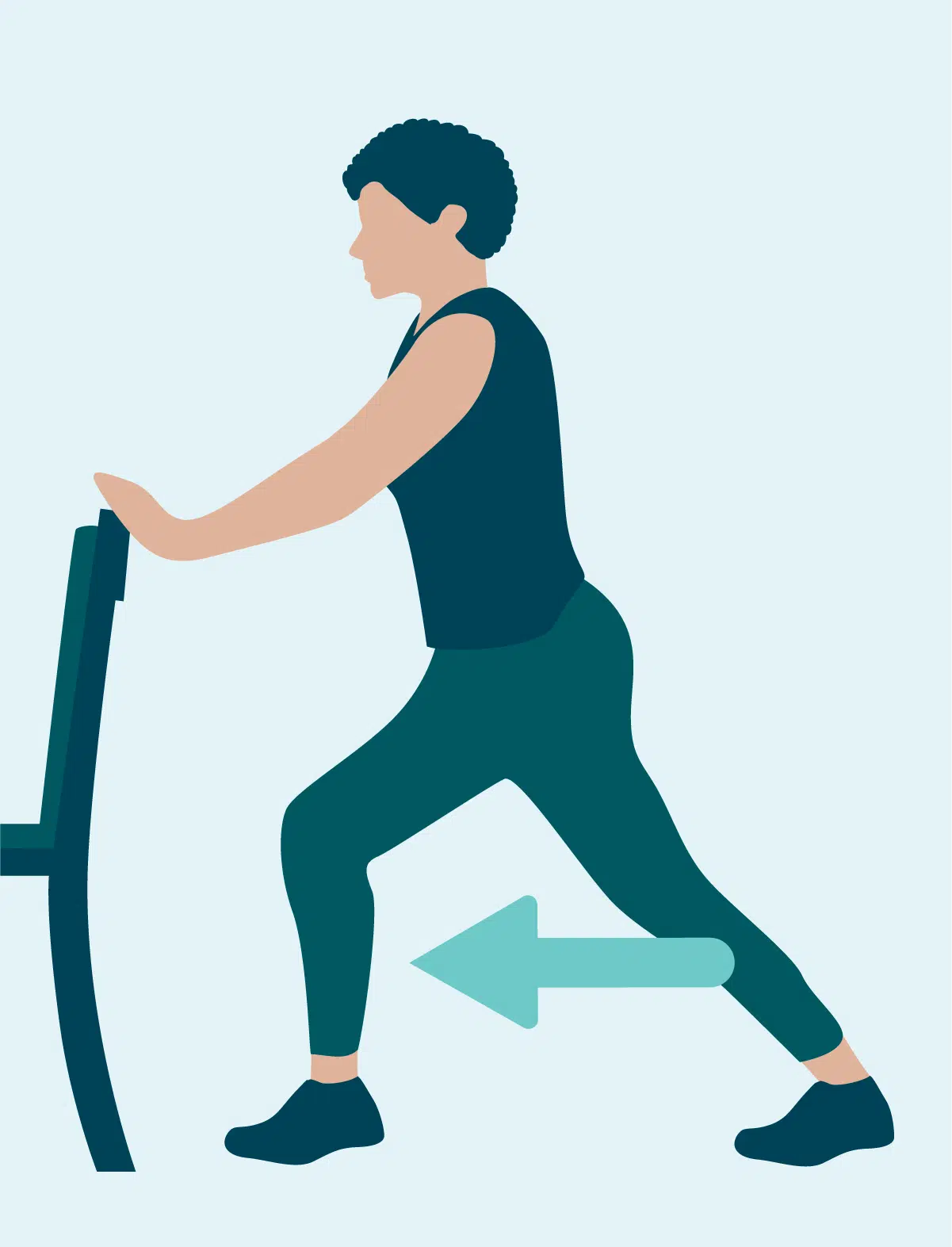
9. Calf stretch
The final few exercises require you to get out of the chair, though you’ll still use it to keep you balanced. Once again, it’s super important that you have a strong chair that won’t move on you.
If you’re concerned about your chair moving on you, you can also use a kitchen counter or another sturdy surface.
The first of these standing chair exercises for seniors helps you stretch your calf muscles. All you have to do is…
- Face the back of the chair at about an arm’s length distance
- Place your hands on the back of the chair for support
- Step back with your right foot while keeping both feet pointed towards the chair
- Lean forward and keep your right heel on the floor.
- Hold for 30 seconds and repeat for 3 reps
- Alternate sides and repeat steps
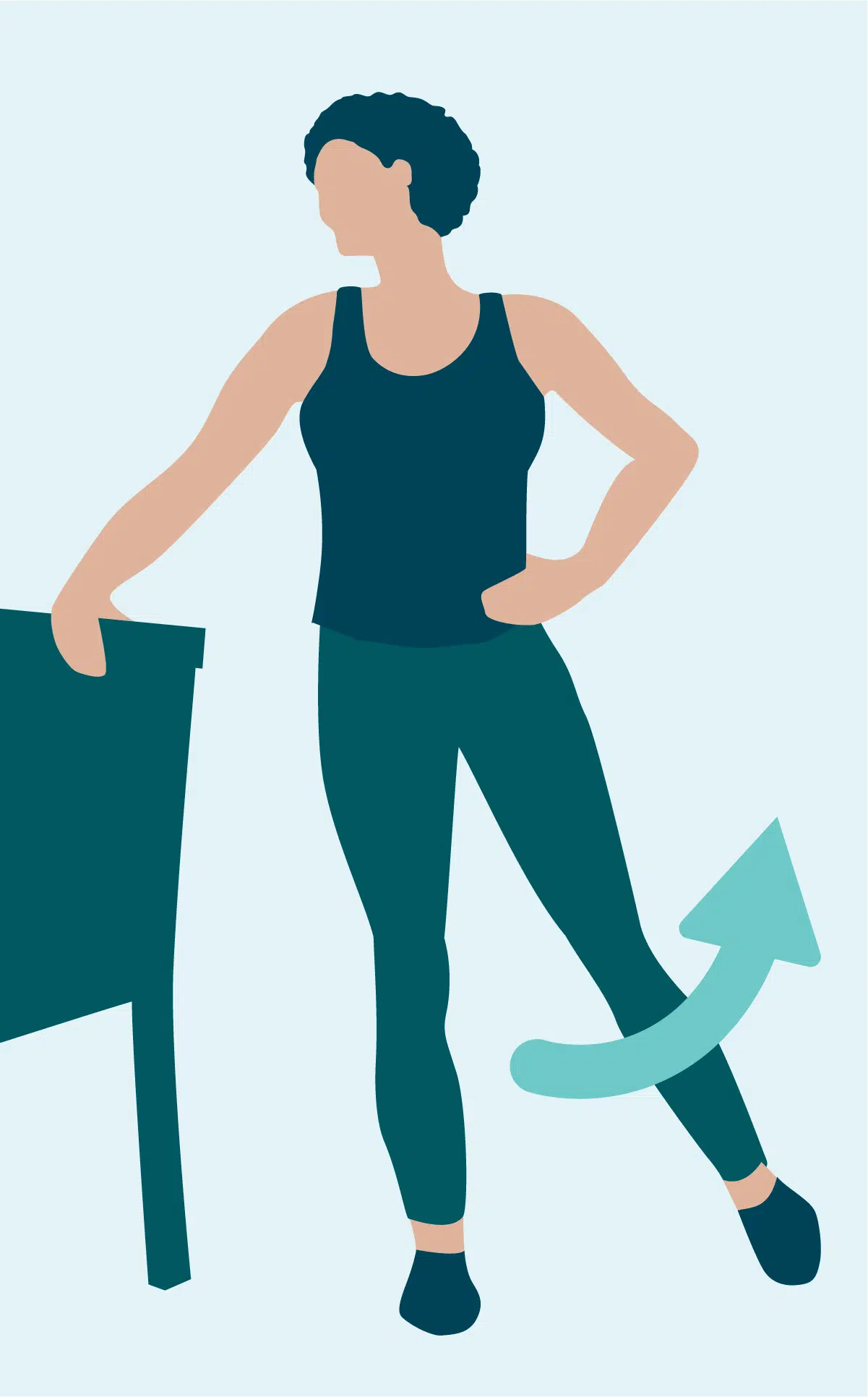
10. Lateral leg swing
The lateral leg swing will help strengthen your hip flexors, hamstrings, glutes, and calves. Here’s how you do it:
- Stand next to the chair, placing your hand on it for support
- Move your left leg out to the side while keeping your knee straight, your waist stable, and your toes pointing forward
- Repeat for 10 reps
- Alternate side and repeat steps
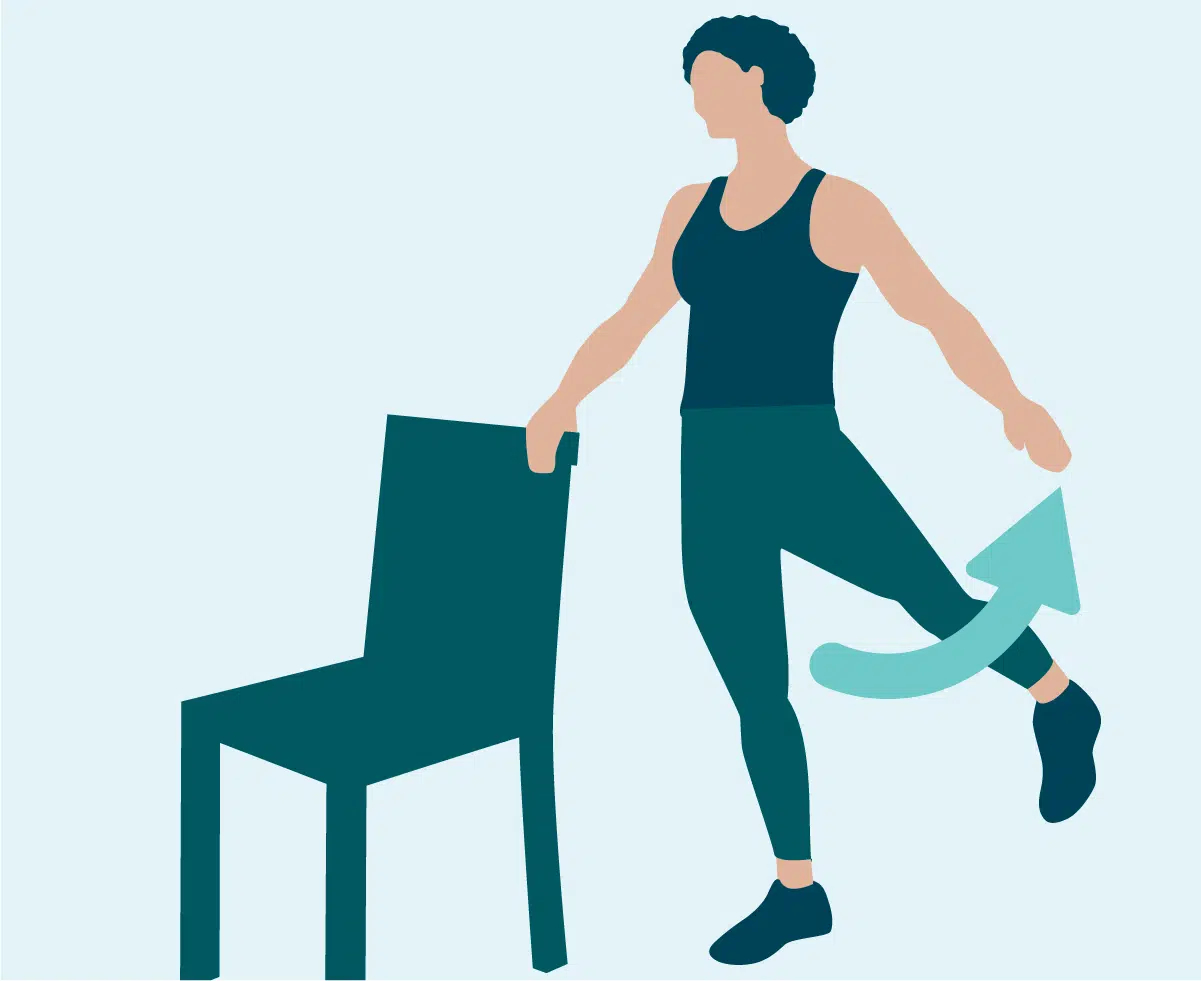
11. Hip extension
Hip extensions help you open up the front of your hips, making it easier for you to do everyday movements. To do this exercise simply follow these steps:
- Stand behind your chair and hold on to the back for support
- Slowly raise your left leg behind you, trying not to bend at the waist
- Bring your leg back to the starting position
- Repeat 10-15 times
- Alternate legs
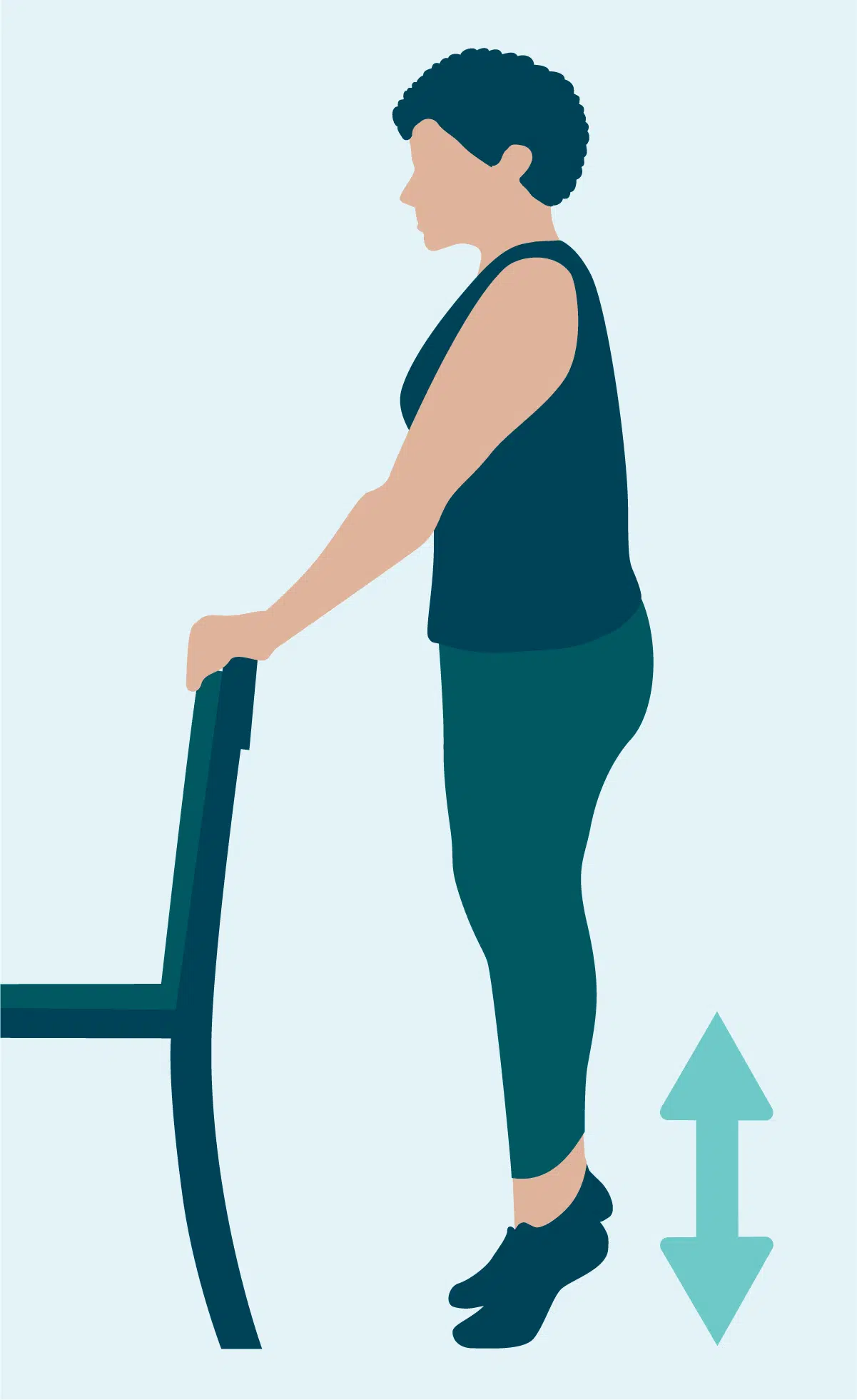
12. Heel and toe raise
This simple standing chair exercise for seniors helps promote balance by strengthening your lower leg muscles. Here’s how it’s done:
- Stand up straight with your feet shoulder-width apart
- Place your hands on the back of the chair for support
- Rise up on your tippy-toes and pause
- Return to the starting position
- Raise your toes with your ankles left on the ground
- Repeat steps with both feet together for 10 reps
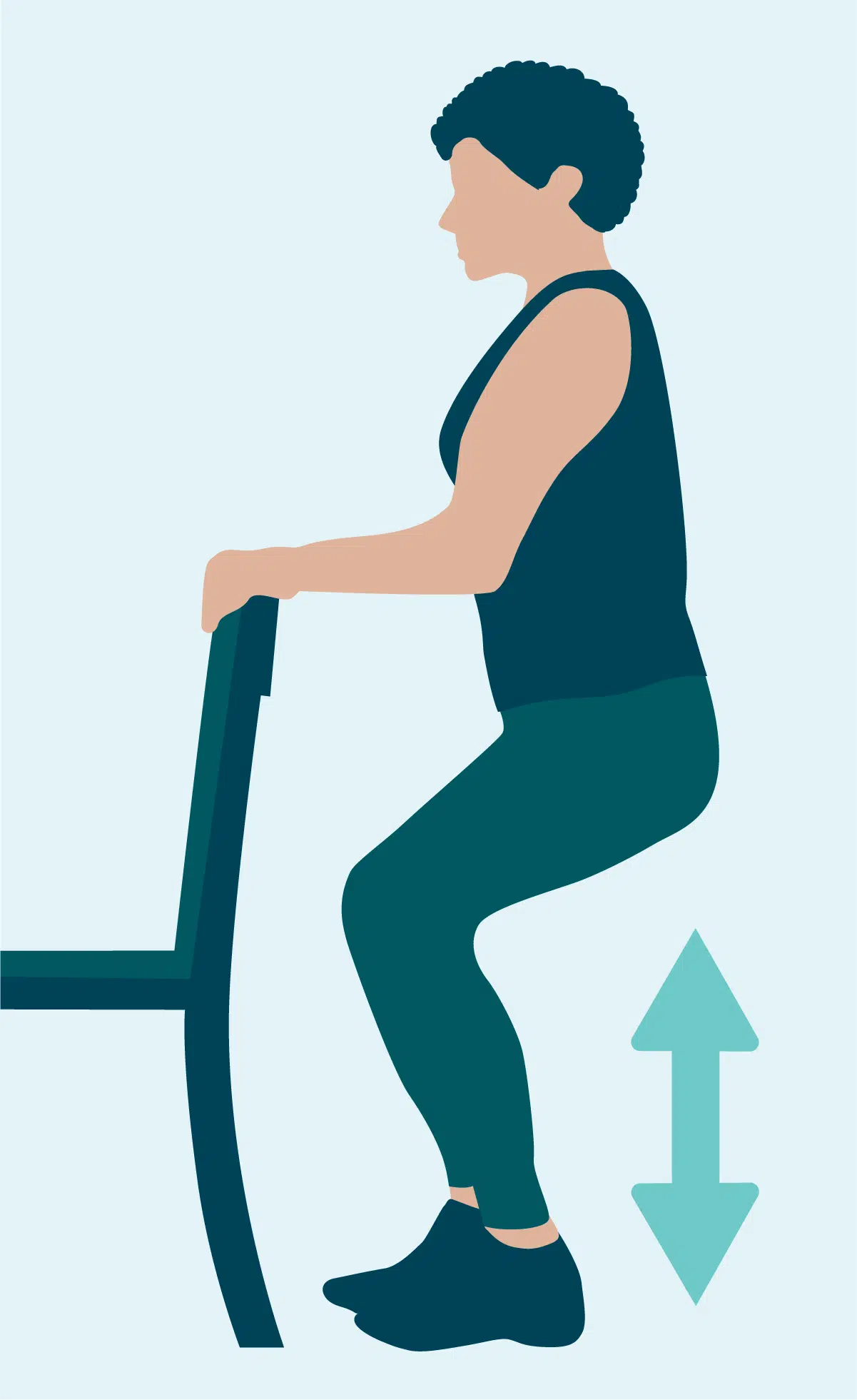
13. Mini-squats
Knees are some of the most sensitive body parts for older adults, and mini-squats are a great way to keep them strong without causing too much strain on them. They are easy to do, too.
- Stand behind the chair and hold on for support
- Bend knees as far as you comfortably can
- Keep your back and head up straight behind your toes (see picture)
- Return to a standing position
- Repeat for 10 reps
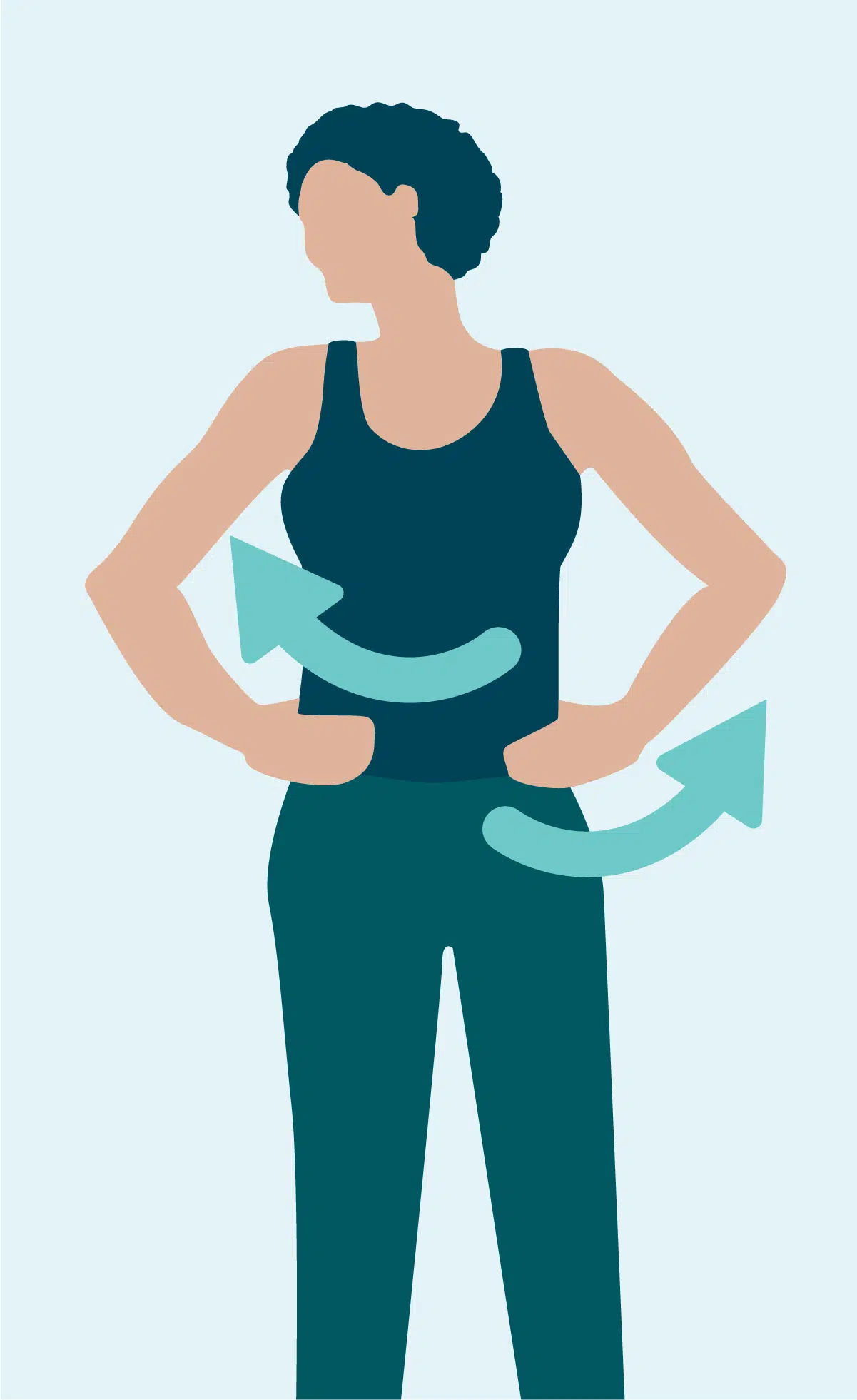
14. Side-to-side twist
The last exercise is special because it can be done with or without a chair.
If you’re confident in your balance and core strength, you might want to try this one standing up straight (as in the picture). However, you can also sit down and do this exercise if you’d like. Make sure you don’t push yourself too hard and do only what you and your doctor consider appropriate.
Regardless of how you do it, you will gain mobility and strength in your upper torso. Just follow these steps:
- Start with your feet shoulder-width apart and your upper body straight
- Slowly twist your body from right to left, keeping your back as straight as possible
- Return to center
- Twist in the opposite direction
- Repeat for 10 reps on each side
When to Consider Chair Exercises for Seniors
These chair exercises for seniors are perfect for older adults looking to get healthier and more active. Any exercise requires extensive physical strain, but doing them while seated can reduce the amount of stress you put on your body. This will make it less likely that you will injure yourself in the process.
The seated exercises for seniors are especially helpful for older adults with specific needs or experiences.
If any of the following categories describe you, you might want to consider implementing some or all of these exercises.
- Struggle with balance
- Higher fall risk
- Limited range of motion
- Recently had surgery or injury
- Just getting into the rhythm of exercising
- Looking for a new way to mix up your routine
- Wanting to perform daily tasks with greater ease
How Much Activity Do Older Adults Need?
While some seniors will want to get after these workouts every day, it’s important to talk about your body’s ability to handle your regiment. The last thing you want to do is overstress your body and cause injury.
That being said, most doctors recommend a mixture of aerobic activity and muscle-strengthening activities. The chair exercises for seniors we outlined above fall into the second category, while activities like walking or jogging fall into the first.
The Canadian Physical Activity Guidelines, developed by the Canadian Society for Exercise Physiology, state that generally fit older adults over 65 with no limiting health conditions should do two or more days a week of muscle-strengthening activities mixed with 75-150 minutes of aerobics depending on intensity.
Lower intensity activities like walking require more time (150 minutes or 30 minutes a day over 5 days a week). Higher intensity activities like jogging or running need only 75 minutes per week. You can also mix the two and meet somewhere in the middle.
Related resource: The 8 Best Core Exersices for Seniors
More than anything, you should speak with your physician about what exercises and what frequencies are right for you.

